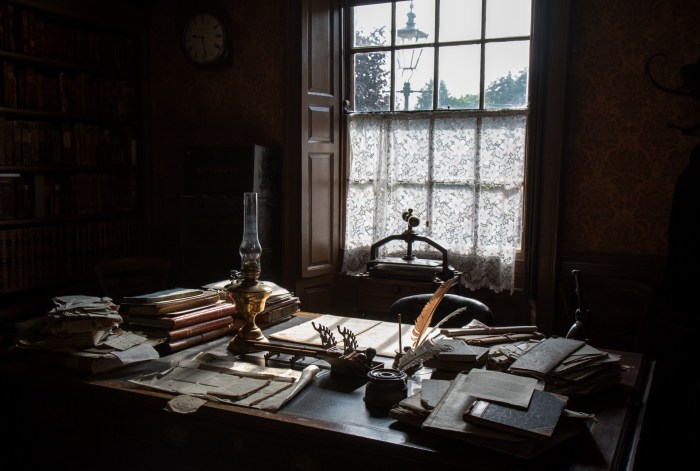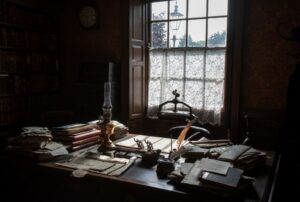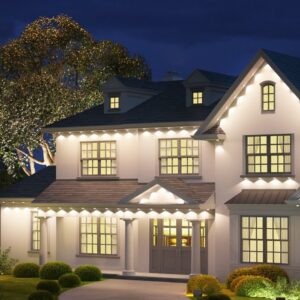
Vintage furniture restoration is an art that breathes new life into cherished pieces from the past, and it holds a special place in the hearts of many enthusiasts. The process involves not just repairing and rejuvenating but also preserving the character and history embedded in each item. With the right techniques and tools, anyone can embark on a journey to restore their vintage treasures, merging timeless elegance with modern flair.
This guide delves into essential restoration techniques, tools, and innovative ways to incorporate vintage furniture into contemporary spaces. Whether you’re stripping and refinishing wood or matching upholstery, you’ll find valuable insights that elevate your restoration projects.
Vintage Furniture Restoration Techniques

Restoring vintage furniture can breathe new life into cherished pieces, preserving their history and enhancing their beauty. Utilizing various restoration techniques allows enthusiasts to not only rejuvenate the furniture but also maintain its authenticity. Here, we will explore the step-by-step process of stripping and refinishing wood furniture, techniques for repairing upholstery, and methods for identifying and matching original finishes.
Stripping and Refinishing Wood Furniture
The process of stripping and refinishing wood furniture involves several key steps that must be carried out with care to ensure the integrity of the piece is preserved.
1. Preparation
Start by cleaning the furniture to remove dust and grime, then assess the condition of the wood to identify any areas needing special attention.
2. Stripping
Apply a chemical stripper using a brush, covering all surfaces evenly. Let the stripper sit as per product instructions until the finish begins to bubble.
3. Scraping
Use a plastic scraper to gently remove the softened finish. This step requires patience to avoid gouging the wood.
4. Sanding
Once stripped, sand the surface with progressively finer grit sandpaper, finishing with a very fine grit to ensure a smooth surface. Always sand in the direction of the wood grain.
5. Cleaning
Wipe the surface with a damp cloth to remove any dust created from sanding.
6. Staining or Sealing
Choose a stain that matches the desired finish, apply it evenly, and let it penetrate before wiping off any excess. Finally, seal the wood with a clear protective finish to enhance durability.
“Restoration is not just about making something look new; it’s about honoring its past while preparing it for the future.”
Repairing Upholstery on Vintage Pieces
Repairing upholstery on vintage furniture requires specialized techniques to maintain the aesthetic and value of the piece. Here are some essential steps involved in this process:
1. Assessment
Examine the upholstery for tears, stains, or wear. Determine whether the fabric can be repaired or if replacement is necessary.
2. Cleaning
Clean the fabric carefully using an appropriate cleaning solution, ensuring not to damage it. Spot cleaning may be sufficient for minor stains.
3. Reinforcement
For worn areas, consider reinforcing the fabric with patches or backing materials. This provides extra support without compromising the original look.
4. Sewing
Use a needle and thread to stitch up any tears or loose seams. Matching the thread color to the fabric is crucial for a seamless repair.
5. Replacement
If necessary, replace the upholstery fabric entirely. Choose a fabric that complements the piece and matches the era it represents.
6. Final Touches
After repairs are complete, consider adding a protective treatment to the upholstery to guard against future damage.
Identifying and Matching Original Finishes
Identifying and matching original finishes is vital to preserving the authenticity of vintage furniture. Understanding the types of finishes used in various periods can aid in maintaining the integrity of the restoration.
1. Research
Investigate the age and style of the furniture to understand the typical finishes used during that period, such as shellac, varnish, or oil.
2. Testing
Conduct a small test on an inconspicuous area to see how the existing finish reacts to solvents. This may help determine the type of finish used.
3. Color Matching
If refinishing, take a sample of the original finish to a paint or stain supplier for color matching. This ensures that the new finish blends seamlessly with the old.
4. Application
Apply the matched finish in thin coats, allowing proper drying time between layers. This method mimics the original application process and enhances the overall appearance.
5. Documentation
Keep records of the materials and finishes used in the restoration for future reference. This documentation can add value to the piece and aid in future restorations.
“In restoration, matching the original finishes not only preserves the furniture’s story but also enhances its character.”
Tools and Materials for Restoration
Restoring vintage furniture is both an art and a science, requiring the right tools and materials to achieve stunning results. Whether you’re a seasoned restorer or a newcomer to the craft, understanding the essentials can make all the difference in your projects. Here, we delve into the must-have tools and materials for furniture restoration to help you bring your vintage pieces back to life.
Essential Tools for Restoration
Equipping yourself with the right tools is crucial for effective vintage furniture restoration. Each tool serves a specific purpose, enabling you to tackle various aspects of the restoration process with confidence. Below is a list of essential tools and their specific uses:
- Screwdrivers: Essential for removing and tightening screws. A set with various sizes, including flathead and Phillips, is necessary to accommodate different furniture types.
- Claw Hammer: Used for driving nails and removing them, particularly in disassembling furniture.
- Pry Bar: Useful for separating pieces of furniture without causing damage, especially in delicate restorations.
- Chisels: Needed for carving, shaping, and removing wood, allowing for detailed restoration work on intricate designs.
- Sandpaper: Essential for smoothing surfaces before refinishing. Various grits are necessary for different stages, from rough sanding to fine finishing.
- Wood Glue: Used for bonding separated pieces of wood. Look for high-quality, strong adhesive suitable for furniture repair.
- Paintbrushes: Vital for applying stains, paints, or finishes. Various sizes and shapes aid in detailed work and surface coverage.
Materials Needed for Restoration Projects
Choosing the right materials is just as important as having the right tools. The materials used can greatly affect the quality and appearance of the restored furniture. Here is an overview of essential materials commonly needed for various restoration projects:
- Wood Fillers: These products help to repair gouges, holes, and imperfections in the wood, allowing for a smooth finishing surface.
- Wood Stains: Available in various colors and finishes, wood stains enhance the natural beauty of the wood while providing color consistency across the surface.
- Finishing Products: Options include varnishes, polyurethanes, and oils that protect the wood while adding shine and depth to the finish.
- Fabrics and Upholstery Materials: For chairs and sofas, selecting high-quality fabrics and foam padding is vital for both comfort and aesthetics in reupholstering.
- Hardware: New knobs, pulls, hinges, and other hardware can update the look of vintage furniture while ensuring functionality.
Importance of Eco-Friendly Products
In today’s restoration landscape, using eco-friendly products is increasingly important for both environmental sustainability and the health of those working on the projects. Many traditional products contain harmful chemicals that can be detrimental to both the environment and human health. Eco-friendly alternatives are often made from natural ingredients and are free from volatile organic compounds (VOCs).
“Using eco-friendly materials not only preserves the environment but also contributes to healthier indoor air quality.”
When selecting products for your vintage furniture restoration, look for certifications or labels that indicate sustainability, such as those that are biodegradable or made from recycled materials. Additionally, opting for non-toxic finishes and glues can make the restoration process safer for you and your family, creating beautiful pieces that you can feel good about using in your home.
Integrating Vintage Furniture in Modern Spaces
Blending vintage furniture with contemporary décor can create a distinct and inviting atmosphere in any living space. These unique pieces not only tell a story but also provide a sense of nostalgia that complements modern designs. By thoughtfully incorporating vintage furnishings, homeowners can achieve a harmonious balance between old and new, resulting in a space that feels both stylish and warm.When integrating vintage furniture into modern spaces, it’s essential to consider how these pieces can enhance the overall aesthetic.
Vintage items can serve as focal points or subtle additions that enrich the environment. They bring character and a sense of history, allowing for a personal touch in contemporary homes. The contrast between the aged textures of vintage pieces and the sleek lines of modern furniture creates an engaging visual dynamic.
Blending Vintage Furniture with Contemporary Décor Styles
Combining vintage furniture with contemporary décor styles involves a few strategic considerations. By following these guidelines, you can create a cohesive and inviting atmosphere:
1. Choose Key Pieces
Select standout vintage items that can serve as focal points, such as a mid-century coffee table or an ornate armchair. These pieces can draw attention while harmonizing with modern elements.
2. Mix Materials
Combine various materials to create depth. For instance, pairing a rustic wooden dining table with modern metal chairs can forge a compelling contrast.
3. Color Coordination
Incorporate a color palette that harmonizes with both vintage and modern pieces. Use neutral tones to allow vintage colors to pop without overwhelming the space.
4. Layer Textures
Use vintage textiles like a patterned rug or throw pillows alongside sleek contemporary fabrics. This layering creates comfort and visual interest.
5. Artistic Arrangement
Arrange vintage furniture in a way that promotes flow and functionality. Consider balancing vintage elements with contemporary pieces to maintain an inviting layout.
Integrating vintage pieces can transform a mundane space into a story-rich environment.
Character Addition to Real Estate Properties
Vintage furniture can significantly enhance the character of real estate properties. By incorporating unique vintage elements, homeowners can differentiate their listings in a competitive market. Here’s how vintage pieces contribute to property character:
Creating Unique Selling Points
Properties adorned with vintage furniture often stand out in listings due to their charm and individuality. A well-placed vintage sideboard or an eclectic lamp can capture potential buyers’ attention and create a memorable impression.
Highlighting Architectural Features
Vintage furniture often complements architectural styles, such as Victorian or mid-century homes. This synergy can enhance the property’s overall appeal and encourage buyers to envision their lives in the space.
Expressing Personality
Homes featuring vintage furnishings convey a sense of personality and warmth. Buyers are often drawn to spaces that feel lived-in and inviting, making the property feel more like a home rather than just a house.
Impact of Vintage Pieces in Home Improvement Projects
In home improvement projects, especially those focused on outdoor spaces, vintage furniture can add a unique charm. Here are several ways vintage garden and outdoor furniture can enhance these projects:
Creating a Cozy Outdoor Retreat
Vintage seating, like wrought iron chairs or a weathered wooden bench, can create a comfortable area for relaxation and gatherings, fostering a retreat-like atmosphere in gardens.
Inspiring Landscaping Choices
The style of vintage furniture can influence landscaping choices. A rustic farmhouse table might inspire a garden filled with wildflowers, while an elegant vintage chaise lounge could suggest a more manicured garden design.
Sustainable Choices
Incorporating vintage outdoor furniture aligns with sustainable practices, as these pieces are often made with durable materials and can be repurposed rather than contributing to landfill waste.
Enhancing Visual Appeal
Vintage pieces can add character to outdoor spaces, making them visually appealing. An antique garden stool or a retro picnic table can serve as eye-catching focal points in a yard or patio area.
Vintage outdoor furniture transforms patios and gardens into vibrant, inviting spaces for relaxation.
Outcome Summary

In conclusion, vintage furniture restoration is more than just a hobby; it’s a fulfilling endeavor that connects us with the past while enhancing our present environments. By employing the right techniques and choosing quality materials, you can create stunning focal points in your home or garden that reflect your unique style. So, gather your tools and let your creativity flow as you embark on this rewarding restoration journey.
Clarifying Questions
What is the first step in vintage furniture restoration?
The first step is to assess the piece’s condition and determine whether it requires stripping, refinishing, or simply cleaning.
How do I choose the right upholstery fabric?
Select a durable fabric that complements the vintage style of the furniture while ensuring it can withstand everyday use.
Can I use modern paint on vintage furniture?
Yes, but it’s best to use paints that are suitable for furniture and replicate or enhance the original aesthetic.
How do I maintain restored vintage furniture?
Regular dusting, avoiding direct sunlight, and using appropriate cleaning products will help preserve the restored finish.
Is it necessary to use eco-friendly materials in restoration?
While not mandatory, eco-friendly materials are recommended as they are safer for you and the environment.





